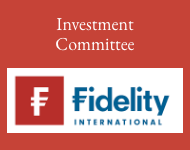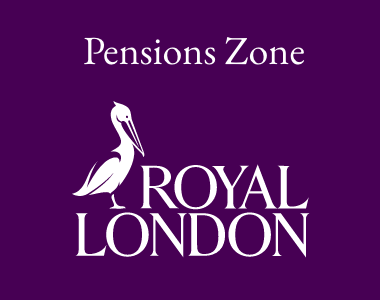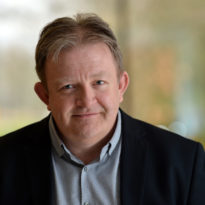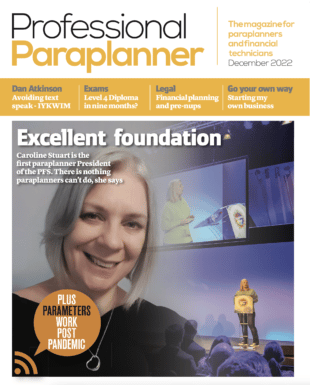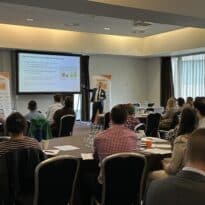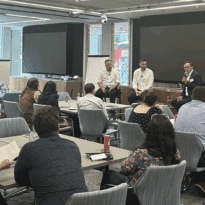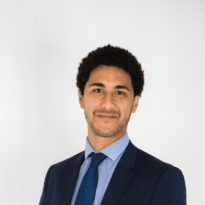Rob Kingsbury spoke to Hugh Johnson, head of Proposition Delivery, Sanlam UK, on building a hybrid advice service and what it means for the paraplanning team
When Professional Paraplanner profiled Hugh Johnson in our April 2017 issue, he was head of Paraplanning for the company. Fast forward to April 2022 and Hugh is head of Proposition Delivery, Sanlam UK, demonstrating how the skills and knowledge acquired being a paraplanner and running a paraplanning team, and a lot of hard work along the way, can take paraplanners into very different roles.
The head of Proposition Delivery role developed out of necessity rather than design, Hugh explains. “2017 was the point at which demand for paraplanners grew exponentially and salary levels started rising. This made it more difficult to recruit good paraplanners, just at the time when, in January 2018, MiFID II doubled our workload. It led me into designing a new service proposition for the business, using technology to create efficiency.”
This was done in two ways, he says. “First was recognising the need to make more efficient the way we imported data into the system and produced reports. We spent a lot of time reviewing our templates and digitising them so they could be automated, as well as ensuring we had better quality data coming in at the top end so it could be used more efficiently downstream.”
The second development was to build from scratch a desk-based advice service, which Hugh was tasked with structuring and running. This enabled the company to take ‘orphan’ clients that the company had acquired over the years and serve them more effectively, profitably and in line with the new MiFID regulations, through an at-a-distance proposition.
“So, by end of 2018 my role had changed, and I had accountabilities for three regulated advisers and a support person, as well as the paraplanning team of 17,” Hugh says.
At the same time, Hugh decided to become authorised himself. “I wanted to have the experience of advising, because I think you can best build a better process having done the work yourself. So I became authorised and took on some clients.”
Other responsibilities
Now, as well as running the desk-based advice team and the support for it, he still has oversight of the paraplanning team of 19 people, but says he is less involved in the day-to-day running of the paraplanning team, as he now has two paraplanning team leaders reporting into him.
The role has more far-reaching managerial responsibilities also. “I sit on committees and forums that are helping to build out the next phase of Sanlam UK as a business. I input into the projects and then through my teams, I ensure the various elements for which we are responsible are delivered.”
As a role it can be very varied day-to-day. “On any one day I could be involved in what to do with a client case, and next mapping the client journey and deciding what functionality we want on our client portal.”
Over time, Hugh sees the role becoming more focussed on the proposition side.
Hybrid advice proposition
A key area which falls squarely within his area of Proposition Delivery is developing the company’s hybrid advice offering.
Phase one of the development started with digital onboarding, Hugh explains. “We digitised the fact find, making it more slimline and client friendly, so people can enter their details online; risk profiling is done in the same way.”
Having the data in this templated and structured way, and thereby of a more consistent quality than it may have been in the past, means the information can be digitised and the production of suitability reports can be automated, to a large extent.
“So much of the onboarding process, particularly the elements that advisers and paraplanners traditionally have undertaken, can now be taken care of through technology,” Hugh says, with the adviser and to some extent the paraplanner, remaining responsible for the human contact and the relationship building. This applies also to the desk-based advice team, who providing remote advice via Teams.
Phase two, he says, is to put on an overlay, that through algorithms “can start picking up on fact find information and start to flag a client’s needs”. As a simple example, he cites the case where a new client couple put down that they have a mortgage and children. “The system will highlight that they are likely to have a need for protection and legacy planning. So, the system is already starting to stimulate the advice before an adviser has even looked at the case.”
Beyond phase two, he adds. “is where we take simple needs and provide advice through a purely digital experience from start to finish.”
Paraplanning role
Hugh sees hybrid advice increasingly gaining traction, “which will mean paraplanners will be doing less of the basic tasks that they do now. The work paraplanners will be given will reflect the salary they are being paid – they will be dealing with the more complex cases, which have a higher value to the business.”
As a result, he says, he sees the overall paraplanning role developing and paraplanners taking on more responsibility in their firms. “I see the paraplanner being the co-pilot of the adviser. Technology will take the heavy lifting out of the report writing process and the paraplanner will be there to review the report, build the cashflows, and to make sure everything that needs to be covered has been, as well as having more contact with the client alongside the adviser.”
It is also future proofing advice firms as they seek to attract different generations of advised clients. “How do you service the next generation of clients in a way that meets their needs and expectations from a digital perspective? I think it has to be a hybrid service – not fully robo – it will be digitally based with the adviser and paraplanner providing the human contact.”
Observing the financial advice market, he says: “Adoption of hybrid advice is happening already in firms that are engaging with technology, as they are seeing the opportunities it presents. I think we will see a scramble now to build out this kind of technology and it will filter out into all firms over the coming years. It’s the future of financial planning.”




